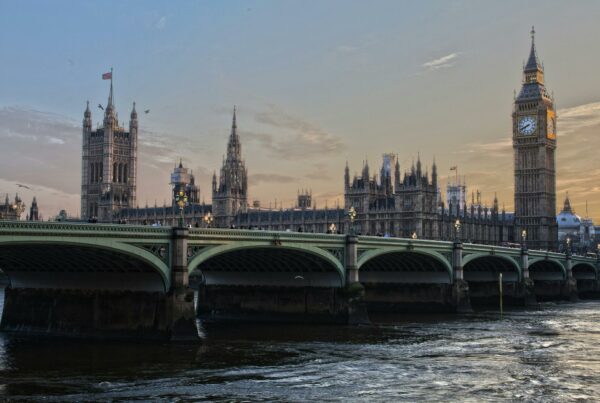 The Budget follows a year that none of us will forget when health, wealth and overall well-being were challenged on every front. As we begin to hopefully emerge from the pandemic and look to the future the Chancellor delivered a Budget on 3rd March that he said focused on “Protecting the jobs and livelihoods of the British people.”
The Budget follows a year that none of us will forget when health, wealth and overall well-being were challenged on every front. As we begin to hopefully emerge from the pandemic and look to the future the Chancellor delivered a Budget on 3rd March that he said focused on “Protecting the jobs and livelihoods of the British people.”
Confirming extensions to the furlough scheme, rates and VAT deferrals, further grants for the self-employed and the sectors worst hit by the crisis he pledged that he would continue to do “whatever it takes” to help families and businesses through the crisis.
However, he didn’t shy away from spelling out the costs of the pandemic and stressed that successive governments would be tackling the funding crisis for many years to come. He went on to spell out how he intended to make a start on that too.
In this note, FPC Managing Partner, Moira O’Shaughnessy comments on the financial planning issues that flow from the budget, guest contributor, Chris Barrington, Tax Partner at Harold Sharp Accountants shares his insights from a business owners’ perspective and Independent Economic Consultant, Peter Stanyer provides his comments.
 The Financial Planner’s Perspective: Moira O’Shaughnessy
The Financial Planner’s Perspective: Moira O’Shaughnessy
Relief or reprieve
Many of the headline announcements had been disclosed over the weekend so a freezing of allowances and certain tax thresholds was expected but not necessarily until 2026 by which time economic growth and the impact of inflation may well have drawn many new taxpayers into the higher rate tax bracket. So, it was a relief to see no changes to pension funding allowances, carry forward or higher rate relief so our younger clients can still take some action to offset any higher rate tax burden.
The capital gains tax allowance has also been frozen until April 2026 at £12,300 and that too is a relief as there had been an expectation that it may be reduced as part of a wider levelling up agenda. Silence on any plan to immediately bring capital gains tax rates in line with income tax may only be a temporary reprieve but gives scope for some further planning particularly if we can count on the CGT allowance not being up for grabs any time soon.
Meanwhile, both the lifetime allowance and inheritance tax nil rate band remain intact albeit frozen. It seems inevitable that further changes will come in time but for now this means that gifts into Trusts can continue to give scope for planning and lifetime gifting strategies of surplus income or business property remain effective, non-contentious ways of reducing the longer term IHT burden.
There were a raft of smaller measures and we will share more as details emerge but here’s two small areas of interest:
Green saving – coming soon…
FPC clients will be well aware that the interest rates on deposits at NS&I have slumped in recent months. Yesterday the Chancellor confirmed that NS&I will be offering a new “green” savings product in the summer to give UK savers the chance to effectively fund projects that support the move to a low carbon economy and tackle climate change. We do not expect the investment limits to be significant but if the offering is in the form of a tax free savings certificate it may be worthy of consideration as part of gifting strategies for children and grand-children so we will keep you posted once details are confirmed.
Community Ownership Fund
And finally, we know from the work of our Foundation that community groups have had their own fund raising efforts severely hampered during the crisis yet the demands for their services have often increased. So, there is some good news here in the form of a £150m Community Ownership Fund which can help local community groups buy or take over local community assets at risk of being lost. Community groups will be able to bid for up to £250,000 matched-funding and the first bidding round for the fund will open by June 2021. We look forward to supporting our local community groups to access funding where appropriate and suspect there may be a few more community owned pubs on the horizon so cheers to that!
For business owners: Chris Barrington (Tax Partner at Harold Sharp & Co)
“There were reasons to be cheerful despite the proposed increase in corporate tax. My immediate reaction following the Budget Speech itself, but before seeing “the small print”, is one of significant relief and even some surprising enthusiasm.
The freezing of Income Tax thresholds was expected, a gradual tax rise broadly through to April 2026, and the increase in the Corporation Tax rate to 25%, while unfortunate, is also not a huge surprise. Thankfully the latter is deferred until 2023, and is tempered by (I) the retention of the existing rate for small companies; (ii) the temporary ability for loss-making companies to carry back losses three years; and (iii) a new “super deduction” for expenditure on qualifying plant and equipment at 130% of cost.
We wait with interest to see what the Chancellor’s plans are for R&D tax relief and the Enterprise Management Incentives (EMI) scheme, both of which he suggested might be bolstered to be “internationally competitive”, in our post Brexit world.
In the meantime, Coved support systems are rolled forward convincingly until the end of September in most instances, providing reassurance to many that this will not come to a premature end.
Overall, it sounds like support and motivation was on Mr Sunak’s mind and he delivered both well. We know that the so-called “Tax Day”, on 23 March, is a date when consultations will be launched, potentially referring to much more uncomfortable plans for tackling the deficit in the medium to longer term. We will cross that bridge when we come to it, in less than three weeks’ time.”
“Tax Day”
We too await Tax Day.
Last year the Chancellor commissioned a review of capital gains tax by the Office of Tax Simplification and that review called for an overhaul of the capital taxes regime. Now, in a change to usual protocols, the tax consultations usually published on Budget Day are being deferred until 23rd March and that is when we are likely to get a better indication of the governments longer term policy agenda and areas of focus.
As always, we will do our best to keep you informed and one step ahead but if you have any queries about how the Budget might affect you please do not hesitate to contact us.
 An Independent Economic Consultant’s Perspective: Peter Stanyer
An Independent Economic Consultant’s Perspective: Peter Stanyer
Rishi Sunak’s second budget was a solid, rather than visionary, start to setting the public finances back on the path towards sustainability after the pandemic. The tax burden is due to rise as explicit austerity is not mentioned. This is helped by the UK and global economy which look set fair to recover strongly over the next few years from the enormous disruption of the past 12 months.
State of the nation
The forecasts from the Office for Budget Responsibility (OBR) accompanying the Chancellor’s 2021 budget on 3 March show the economy surviving the shock of the pandemic better than had been expected in November. Economic output is not as weak and unemployment not as high as had been feared and the economy is now expected to regain its pre-pandemic level of GDP in mid-2022 6 months earlier than previously expected.
Helped by this, tax revenues are higher and government expenditure a bit lower. The budget deficit in the year 2020-21 is now expected to be £50 billion less than the enormous £394 billion projected in November at a still eyewatering £355 billion or 16% of GDP. This scale of borrowing is greater than in any year in the last 120 years apart from during war time, and the national debt is expected to peak at 110% of GDP in 3 years’ time.
The benefit of the better than expected state of the government finances in recent months has been spent by the Chancellor by extending furlough which will now be phased out several months later, by October. To this the Chancellor added 130% “super deduction” for business capital investment which is expected to cost a cumulative £24 billion and drive a strong recovery in business investment in the forecast. As furlough and other crisis measures end, the deficit will fall rapidly and the national debt is forecast to stabilise.
Prudence reigns and taxes rise
The over-riding message from the budget is that the Chancellor will be prudent in managing the public finances. The government is determined not to repeat the severe austerity of the decade after 2008 (though tight expenditure limits underlie the forecasts), which means that the government seems set on increasing tax revenue even if the politically sensitive headline rates of the major taxes do not rise.
The Chancellor has two major tax rises built into the budget. The first is corporation tax where the Chancellor pre-announced an increase from 19% to 25% in 2023 and the freezing of income tax thresholds up to 2026. Together these two measures will raise almost £67 billion by April 2026. Meanwhile the government had already announced that on March 23rd it will publish consultations on medium term tax policy, including capital gains, inheritance tax and environmental levies. The focus inevitably will be on the scope for raising money at least cost in terms of political opposition and economic efficiency.
Favourable forecasts
The high levels of efficacy in the rapidly developed Covid vaccines and the better than assumed roll out of the vaccination programmes in the UK and the US have improved the mood throughout the economy. This provides a favourable background for the budget, despite the need to accommodate the cost of the third national lockdown. The OBR project a strong recovery spread through this year after the first quarter, with a more gradual but still fast pace into 2022. Despite this, they suggest the economy will fail to fully close the gap with its pre-pandemic projections with an approximately 3% of GDP enduring “scarring” of the economy.
Can the gap be closed?
The most obvious way this shortfall might be closed would be if changes in business practices during the pandemic encourage an improvement in productivity by business and the public sector. Some businesses and individuals will seize opportunities, but others will not. This recession is different and the lessons from the past may not apply, but most economists would agree that some long-term loss of potential output is probable. Inevitably some otherwise viable businesses will have been forced to close during the pandemic and their contribution is not easily replaced and in addition the damage done to the education of many youngsters makes it likely that future labour productivity will to a degree have been undermined.
This unusual economic shutdown and now the unusually rapid forecast recovery means that past relationships that economists rely on in their forecasts may not apply: the scale of change is just too big.
Thanks to the direct and indirect effects of government support, households in large parts of the economy have suffered little decline in income, but have been unable to spend. By mid-2021, households are expected to have accumulated £180 billion of savings in excess of the amounts that would have been expected without lockdown. They have also taken the opportunity to repay large amounts of debt so there has been a substantial improvement in the balance sheets of households, even though large swathes of the population have suffered greatly.
Time to spend?
It is not much commented on by others, but the forecast recovery in the economy assumes that only about one quarter of the lockdown-induced rise in household bank balances is actually spent in the next five years. It could easily be more.
Similar uncertainties and upside risks probably exist in the US and the EU. This is why the Chancellor had to seize the opportunity to improve government finances, as after mid 2022 the labour market will likely to be quite tight and unlikely though it may seem to today, the economy could easily overheat. The same applies even more obviously in the USA where President Biden is hoping to persuade Congress to pass a support package equivalent to almost 10% of GDP (though it may be smaller after Congressional compromises).
Unless the global pandemic deteriorates considerably (and in the US and UK vaccination programmes are progressing well), there will probably be little slack in the global economy by mid-2022 and the talk may even be turning to the perils of inflation.
Fear inflation
If inflation does emerge as a concern it may arrive from the US and initially at least in the guise of higher commodity prices. In the past month there has been a noticeable increase in bond yields as markets’ conviction in a robust recovery grows. In the UK this feeds through to debt service costs for the government surprisingly quickly. The increase in UK bond yields in the last month will have already raised debt service costs by £6 billion beyond the level assumed in the budget. Equally though, if the economy performs better than forecast, tax revenues will naturally be higher.
In summary
The budget is certainly bold but it has been criticised for lacking vision. The tax burden is increasing markedly and implicitly the vision of some of moving towards a low tax “Singapore” just offshore from the EU is not in prospect (if it ever was).
- There was little in the budget about supporting government efforts to steer the UK towards being a carbon neutral economy by 2050.
- There was nothing about setting the framework for funding social care in old age.
- There was little about tackling the income inequalities which seem to have been exacerbated by the impact of the pandemic and the difficulty of targeting the lost incomes of gig economy workers.
But it was a solid start to setting the public finances back on the path towards sustainability even if many of the details will need to accommodate unmet demands on the public purse. The UK and global economy look set fair to recover strongly over the next few years from the enormous disruption of the past year.
Peter Stanyer is co-author with Professor Stephen Satchell of The Economist Guide to Investment Strategy, 4th edition, Profile Books, 2018. The views expressed are his own personal views, and do not constitute advice to buy, sell or hold any investment
Sources:
Build Back Better: Plan for Growth





